Travel
LGBTQ travelers to the rescue!
Queers leading the way to tourism recovery
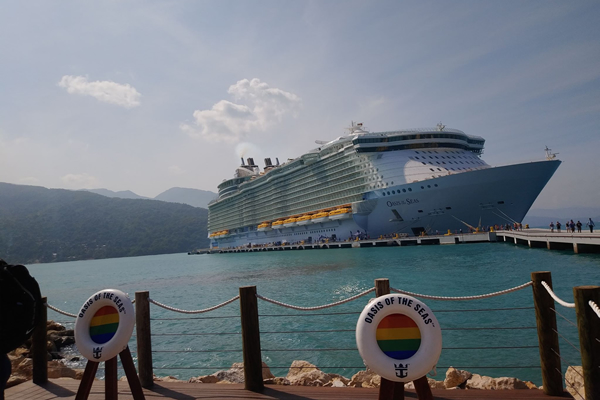
Since the tragic events of 9/11 and the abrupt halt to travel that followed, about every 10 years, the tourism industry is knocked back on its heels. The economic meltdown of 2008 and 2009 was even worse on the travel industry than 2001. And the pandemic is a once-a-century calamity exacerbated by the very things that make travel so enriching: large in-person events, meeting new friends at a hotel lounge, slaloming through a crowded bar in a far-flung city.
The travel industry rebooted before, and it will bounce back again soon. And if history is any guide, LGBTQ travelers will lead the way.
Roger Dow, president and CEO of U.S. Travel Association, the Washington, D.C.-based organization representing all segments of travel in America, says, “Gays lead, and the rest follow. They’re adventurous and like new experiences. They have a penchant for travel far greater than their heterosexual counterparts. They travel more and spend more when they travel. They’re the darlings of the travel industry when it comes to spending and dollars.”
Recent history has demonstrated that LGBTQ travelers — especially those in dual-income-no-child households — are always among the first to travel after social and economic crises. Following 9/11 and again after the 2008/2009 financial crisis, destinations, hospitality companies and travel brands noticed that LGBTQ travelers were prioritizing tourism over other purchase decisions, helping fill airplanes, hotels and, restaurants and animating destinations. So, they began to market to this segment in earnest.
Smart travel marketers will note that this is happening again now. We see — anecdotally and with the support of research by Community Marketing, Inc., Harris Interactive and IGLTA — that this segment travels in higher proportions and intends to book and execute travel in greater proportions than their non-LGBTQ counterparts.
Queer travelers tend to have more disposable income and time to spend it, helping fill destinations and hotels, especially during the quieter periods when kids are in school. Being among the first to travel safely, this resilient segment grants permission to others that they can return to travel safely. The LGBTQ segment has always been disproportionately present in online platforms, which provide a safer way to meet and interact with others in an otherwise potentially anti-LGBTQ world.
They also help achieve travel marketers’ goals by experiencing more, creating social media content and generating buzz.
The segment displays intense loyalty to brands that welcome and include them. There are also surprising halo effects: By signaling welcome to this group, marketers send a sign of inclusiveness to other overlooked and marginalized segments, like Black and LatinX travelers, and the family and friends of queer people are also positively motivated by outreach to LGBTQ people. Finally, these messages resonate strongly with millennial and Gen Z audiences who plan their travel — as well as plot their careers — to destinations and at hospitality brands whose missions align with their more inclusive values.
The segment has also demonstrated a strong affinity for cruises of all sorts, including all-gay or all-lesbian cruises, LGBTQ groups on mainstream cruises, and simply joining mainstream cruises as a same-sex couple or in small friend groups. While cruise vacations are still on a pandemic-induced pause in the U.S., cruise companies — including Carnival, Celebrity, Cunard, Uniworld and the brand-new Virgin Voyages — have all firmly established LGBTQ travelers as a core segment.
“National Travel and Tourism Week takes on special significance this year as we look ahead to recovery following the most challenging year this industry has experienced,” says Christine Duffy, president of Carnival Cruise Line and national chair of the U.S. Travel Association. “Across the country, we are recognizing travel’s value, and the long-standing support of the LGBTQ community will help accelerate our rebound. I know that for Carnival, we pride ourselves on an inclusive atmosphere where every guest is appreciated, and we look forward to welcoming them back as soon as possible.”
One reason queer travelers are uniquely suited to help power the return of travel during this crisis has to do with their decades of experience living under the ever-looming shadow of the HIV/AIDS pandemic, during which they learned the importance of risk mitigation for the good of all. Wearing masks to protect yourself and others resonates with a community that understands the importance of condoms and pre-exposure prophylaxis (PrEP).
According to Randle Roper, co-founder and CEO of VACAYA Full-Ship and Full-Resort LGBT+Vacations, “[Our] guests showed incredible resilience by traveling safely during the pandemic, and they proved they could adapt to live with health protocols that would keep each other and their loved ones back home safe.”
Travel safety is organically entwined with the LGBTQ community’s DNA. In 70+ countries, many popular with LGBTQ travelers, homosexuality is criminalized. That includes 11 countries in which death is the punishment meted out for those convicted of homosexuality and other “crimes” of sexual and gender non-conformity.
While travelers would be spared the harsh treatments locals may suffer, they nonetheless have a great deal to consider when traveling. Same-sex couples still receive awkward and uncomfortable service when checking into hotels with a single bed on the reservation or even simply existing in places where everyone’s assumed to be heterosexual. When a lesbian boards a plane with her legally married wife and their legally adopted children, they could land in a destination where their marriage license is void and their legal guardianship of their kids is in question. Trans and non-binary travelers, especially those oF color, may encounter challenges including lack of safe bathroom access, awkward encounters at TSA security and even outright hostility and worse in any public setting. In the face of all this, queer people still explore and have a lot to teach the rest of the world about how to travel with intent and joy while
maintaining their own safety and that of the community around them.
LGBTQ travelers can also show the world how best to support the tourism and hospitality industries in ways that also strengthen their own communities. “LGBTQ consumers have the power to make change and support LGBTQ-friendly companies and destinations by choosing to spend their travel dollars with those that support our community,” says Jeff Guaracino, co-author of the “Handbook of LGBT Tourism and Hospitality.” “LGBTQ-owned hotels, bed and breakfasts, tour companies, bars and restaurants, festivals and destinations have been especially hard hit by COVID, and as a community, we can support LGBTQ-owned and friendly businesses and their employees by spending our travel dollars with them first.”
LGBTQ tour companies and travel agents have a direct connection to queer travelers and report strong interest in and bookings of travel. According to Robert Sharp, co-founder and CEO of Out Adventures, “After [releasing] our entire tour schedule through the end of 2022, we saw our largest month of sales in our 12-year history.”
Kelli Carpenter, co-founder of R Family Vacations, adds, “Our highest sales have come from our river cruise products and international tour business, showing that travelers are ready to explore the world again.”
VACAYA’s Roper has seen extremely robust sales over the past several months — including selling out their Antarctica Cruise. “With a starting price of around $25,000 per room, that was our best sign yet that our community members are ready to break free from their cages and return to travel,” he says.
Robert Geller, founder of FabStayz, agrees: “Pent-up demand is visible, palpable and quantifiable.”
NYC-based Ed Salvato is a freelance travel writer, instructor at NYU and the University of Texas at Austin’s NYC Center, and an LGBTQ tourism marketing consultant.
a&e features
Visit Cambridge, a ‘beautiful secret’ on Maryland’s Eastern Shore
New organization promotes town’s welcoming vibe, LGBTQ inclusion
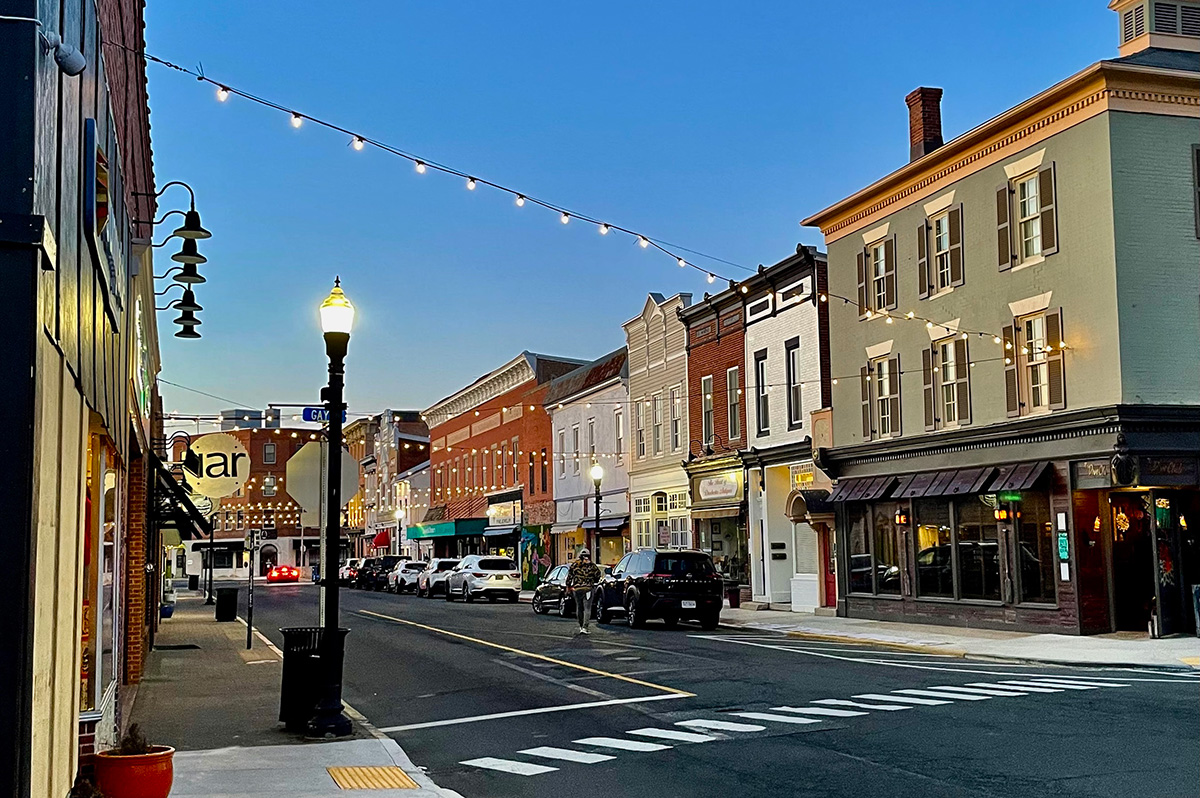
CAMBRIDGE, Md. — Driving through this scenic, historic town on Maryland’s Eastern Shore, you’ll be charmed by streets lined with unique shops, restaurants, and beautifully restored Victorian homes. You’ll also be struck by the number of LGBTQ Pride flags flying throughout the town.
The flags are a reassuring signal that everyone is welcome here, despite the town’s location in ruby red Dorchester County, which voted for Donald Trump over Kamala Harris by a lopsided margin. But don’t let that deter you from visiting. A new organization, Proudly Cambridge, is holding its debut Pride event this weekend, touting the town’s welcoming, inclusive culture.
“We stumbled on a beautiful secret and we wanted to help get the word out,” said James Lumalcuri of the effort to create Proudly Cambridge.
The organization celebrates diversity, enhances public spaces, and seeks to uplift all that Cambridge has to share, according to its mission statement, under the tagline “You Belong Here.”
The group has so far held informal movie nights and a picnic and garden party; the launch party is June 28 at the Cambridge Yacht Club, which will feature a Pride celebration and tea dance. The event’s 75 tickets sold out quickly and proceeds benefit DoCo Pride.
“Tickets went faster than we imagined and we’re bummed we can’t welcome everyone who wanted to come,” Lumalcuri said, adding that organizers plan to make “Cheers on the Choptank” an annual event with added capacity next year.
One of the group’s first projects was to distribute free Pride flags to anyone who requested one and the result is a visually striking display of a large number of flags flying all over town. Up next: Proudly Cambridge plans to roll out a program offering affirming businesses rainbow crab stickers to show their inclusiveness and LGBTQ support. The group also wants to engage with potential visitors and homebuyers.
“We want to spread the word outside of Cambridge — in D.C. and Baltimore — who don’t know about Cambridge,” Lumalcuri said. “We want them to come and know we are a safe haven. You can exist here and feel comfortable and supported by neighbors in a way that we didn’t anticipate when we moved here.”
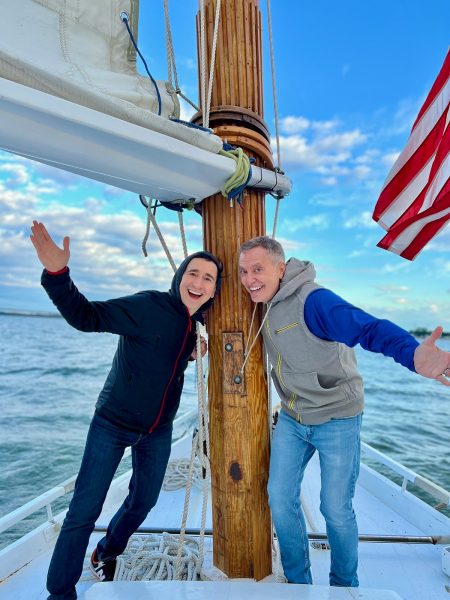
Lumalcuri, 53, a federal government employee, and his husband, Lou Cardenas, 62, a Realtor, purchased a Victorian house in Cambridge in 2021 and embarked on an extensive renovation. The couple also owns a home in Adams Morgan in D.C.
“We saw the opportunity here and wanted to share it with others,” Cardenas said. “There’s lots of housing inventory in the $300-400,000 range … we’re not here to gentrify people out of town because a lot of these homes are just empty and need to be fixed up and we’re happy to be a part of that.”
Lumalcuri was talking with friends one Sunday last year at the gazebo (affectionately known as the “gayzebo” by locals) at the Yacht Club and the idea for Proudly Cambridge was born. The founding board members are Lumalcuri, Corey van Vlymen, Brian Orjuela, Lauren Mross, and Caleb Holland. The group is currently working toward forming a 501(c)3.
“We need visibility and support for those who need it,” Mross said. “We started making lists of what we wanted to do and the five of us ran with it. We started meeting weekly and solidified what we wanted to do.”
Mross, 50, a brand strategist and web designer, moved to Cambridge from Atlanta with her wife three years ago. They knew they wanted to be near the water and farther north and began researching their options when they discovered Cambridge.
“I had not heard of Cambridge but the location seemed perfect,” she said. “I pointed on a map and said this is where we’re going to move.”
The couple packed up, bought a camper trailer and parked it in different campsites but kept coming back to Cambridge.
“I didn’t know how right it was until we moved here,” she said. “It’s the most welcoming place … there’s an energy vortex here – how did so many cool, progressive people end up in one place?”
Corey van Vlymen and his husband live in D.C. and were looking for a second home. They considered Lost River, W.Va., but decided they preferred to be on the water.
“We looked at a map on both sides of the bay and came to Cambridge on a Saturday and bought a house that day,” said van Vlymen, 39, a senior scientist at Booz Allen Hamilton. They’ve owned in Cambridge for two years.
They were drawn to Cambridge due to its location on the water, the affordable housing inventory, and its proximity to D.C.; it’s about an hour and 20 minutes away.
Now, through the work of Proudly Cambridge, they hope to highlight the town’s many attributes to residents and visitors alike.
“Something we all agree on is there’s a perception problem for Cambridge and a lack of awareness,” van Vlymen said. “If you tell someone you’re going to Cambridge, chances are they think, ‘England or Massachusetts?’”
He cited the affordability and the opportunity to save older, historic homes as a big draw for buyers.
“It’s all about celebrating all the things that make Cambridge great,” Mross added. “Our monthly social events are joyful and celebratory.” A recent game night drew about 70 people.
She noted that the goal is not to gentrify the town and push longtime residents out, but to uplift all the people who are already there while welcoming new visitors and future residents.
They also noted that Proudly Cambridge does not seek to supplant existing Pride-focused organizations. Dorchester County Pride organizes countywide Pride events and Delmarva Pride was held in nearby Easton two weeks ago.
“We celebrate all diversity but are gay powered and gay led,” Mross noted.
To learn more about Proudly Cambridge, visit the group on Facebook and Instagram.
What to see and do
Cambridge, located 13 miles up the Choptank River from the Chesapeake Bay, has a population of roughly 15,000. It was settled in 1684 and named for the English university town in 1686. It is home to the Harriet Tubman Museum, mural, and monument. Its proximity to the Blackwater National Wildlife Refuge makes it a popular stop for birders, drawn to more than 27,000 acres of marshland dubbed “the Everglades of the north.”
The refuge is walkable, bikeable, and driveable, making it an accessible attraction for all. There are kayaking and biking tours through Blackwater Adventures (blackwateradventuresmd.com).
Back in town, take a stroll along the water and through historic downtown and admire the architecture. Take in the striking Harriet Tubman mural (424 Race St.). Shop in the many local boutiques, and don’t miss the gay-owned Shorelife Home and Gifts (421 Race St.), filled with stylish coastal décor items.
Stop for breakfast or lunch at Black Water Bakery (429 Race St.), which offers a full compliment of coffee drinks along with a build-your-own mimosa bar and a full menu of creative cocktails.
The Cambridge Yacht Club (1 Mill St.) is always bustling but you need to be a member to get in. Snapper’s on the water is temporarily closed for renovations. RaR Brewing (rarbrewing.com) is popular for craft beers served in an 80-year-old former pool hall and bowling alley. The menu offers burgers, wings, and other bar fare.
For dinner or wine, don’t miss the fantastic Vintage 414 (414 Race St.), which offers lunch, dinner, wine tasting events, specialty foods, and a large selection of wines. The homemade cheddar crackers, inventive flatbreads, and creative desserts (citrus olive oil cake, carrot cake trifle) were a hit on a recent visit.
Also nearby is Ava’s (305 High St.), a regional chain offering outstanding Italian dishes, pizzas, and more.
For something off the beaten path, visit Emily’s Produce (22143 Church Creek Rd.) for its nursery, produce, and prepared meals.
“Ten minutes into the sticks there’s a place called Emily’s Produce, where you can pay $5 and walk through a field and pick sunflowers, blueberries, you can feed the goats … and they have great food,” van Vlymen said.
As for accommodations, there’s the Hyatt Regency Chesapeake Bay (100 Heron Blvd. at Route 50), a resort complex with golf course, spa, and marina. Otherwise, check out Airbnb and VRBO for short-term rentals closer to downtown.
Its proximity to D.C. and Baltimore makes Cambridge an ideal weekend getaway. The large LGBTQ population is welcoming and they are happy to talk up their town and show you around.
“There’s a closeness among the neighbors that I wasn’t feeling in D.C.,” Lumalcuri said. “We look after each other.”
Travel
Park City a mountain haven of LGBTQ inclusivity
Utah getaway hosting two LGBTQ ski events in coming months
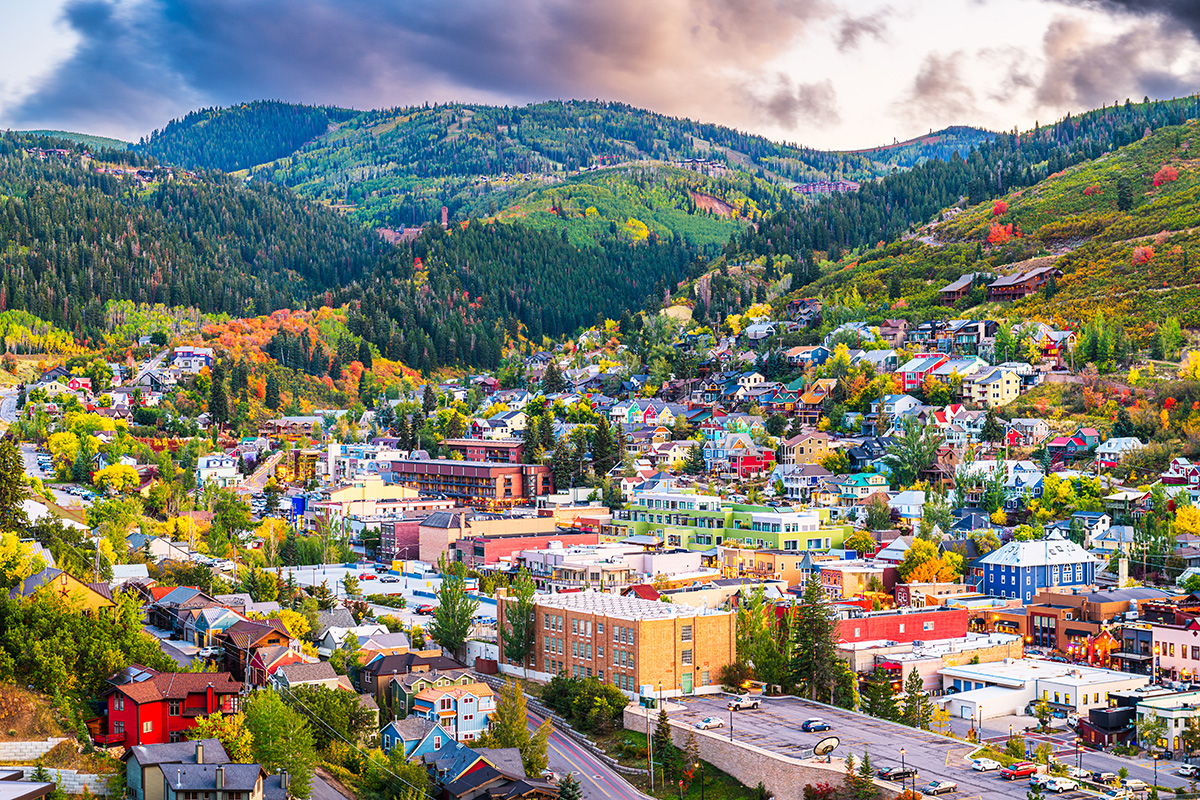
Nestled in the Wasatch Mountains of Utah, Park City is a gem for outdoor enthusiasts, history buffs, and those seeking a world-class dining and relaxation experience. Originally a silver mining town, it has evolved into one of the most popular destinations in the United States, offering not just world-class ski resorts and summer outdoor activities, but also a rich blend of culture, fine dining, and leisure. Whether you are planning a winter getaway, visiting the renowned Sundance Film Festival, or just a weekend escape, Park City offers something for everyone. Among the many things that make it a premier destination are events like the Park City Wine Fest.
Park City Wine Fest is a premier event that draws wine lovers from across the country. Held annually, this multi-day festival is a celebration of fine wines from around the globe, paired with the breathtaking backdrop of the mountains. The event is perfect for both wine connoisseurs and casual drinkers alike, offering something for every palate.
The Wine Fest is not just about tasting a wide variety of wines; it also showcases local cuisine, with restaurants and chefs from Park City presenting gourmet dishes that complement the wines. Wine education is another key aspect of the event, with seminars led by sommeliers, winemakers, and wine experts who share their knowledge on everything from pairing wine with food to understanding different wine regions.
The festival is a true highlight in Park City’s event calendar, combining the beauty of the location with a sophisticated, yet relaxed vibe. Attendees can explore a variety of experiences, including scenic mountain hikes paired with wine tastings, grand tastings at the base of Park City Mountain Resort, and intimate, wine-paired dinners, like the one I attended at the beautiful Waldorf Astoria. The Rustic Reds dinner was a wonderfully sophisticated wine-paired feast led by Wine Academy of Utah’s Jim Santangelo. The five-course meal began with a delicious amuse-bouche followed by beef tartare, endive salad, filet mignon and chocolate cake, each paired perfectly with a glass of wine hand selected by Santangelo.
For those who appreciate fine dining, Park City is home to a variety of outstanding restaurants, with Edge Steakhouse being one of the best. Located in the Westgate Park City Resort & Spa, Edge Steakhouse blends traditional steakhouse fare with an innovative approach to cooking. Known for its exceptional service, high-quality cuts of meat, and fresh seafood, this restaurant offers a dining experience that is both luxurious and satisfying.
What sets Edge Steakhouse apart is its attention to detail. The restaurant’s menu features a variety of cuts, from Wagyu beef to dry-aged steaks, all expertly prepared to perfection. Additionally, Edge offers an extensive wine list, making it easy to find the perfect pairing for your meal. The combination of excellent food, a sophisticated atmosphere, and top-notch service has earned Edge Steakhouse numerous awards and recognitions, making it a must-visit for any foodie in Park City.
No visit to Park City would be complete without a stop at High West Distillery, the first legally licensed distillery in Utah since Prohibition. High West offers a unique experience, blending the old-world charm of the American West with modern-day distilling techniques. Located in the heart of downtown Park City, High West is known for its award-winning whiskeys, but it’s also a fantastic place to grab a bite to eat.
High West’s rustic atmosphere is part of its charm, and the distillery offers a range of whiskey varieties, from smooth bourbons to bold ryes, all made using time-honored methods. In addition to tastings, visitors can take tours of the distillery to learn about the history of whiskey-making in Utah and the art of distillation. I had the chance to attend an elegant Woodland Masquerade at the distillery in Wanship, a quick 20-minute drive from Park City. The event contained entertainment, delicious food and of course whiskey.
Park City isn’t just about great food and drinks – it’s also a haven for those looking to relax and recharge. One of the standout lodging options in Park City is LIFT Park City, a modern mountain resort located in the heart of Canyons Village. LIFT offers luxury accommodations with a contemporary design, providing guests with all the comforts of home while being just steps away from world-class skiing, hiking, and biking trails.
LIFT Park City is designed with both relaxation and adventure in mind. The resort features spacious residences with fully equipped kitchens, private balconies, and stunning views of the mountains. Guests can enjoy the outdoor pool, fitness center, and other amenities that make it easy to unwind after a day of exploring.
Speaking of relaxing, after a day of outdoor activities, there’s no better way to unwind than with a visit to Serenity Spa. Located within the Westgate Park City Resort & Spa, Serenity Spa offers a wide range of treatments designed to soothe both body and mind. From massages and facials to body wraps and aromatherapy, the spa’s expert therapists provide personalized treatments that leave you feeling refreshed and rejuvenated.
The spa’s tranquil atmosphere is the perfect antidote to the stresses of everyday life. With its serene decor, calming scents, and peaceful music, Serenity Spa creates a truly relaxing environment where guests can escape from the hustle and bustle of the outside world. Whether you’re indulging in a full day of pampering or just popping in for a quick treatment, Serenity Spa offers a luxurious retreat that will leave you feeling revitalized.
For those seeking a cozy and casual dining experience, Cafe Terigo is a local favorite. This family-owned restaurant is known for its delicious Italian-inspired dishes, made with fresh, locally sourced ingredients. Located on Main Street in downtown Park City, Cafe Terigo has a charming, rustic atmosphere that makes it a perfect spot for a leisurely lunch or dinner.
The menu at Cafe Terigo features a variety of Italian and Mediterranean dishes, from wood-fired pizzas to house-made pastas. The restaurant is also known for its creative salads, seafood dishes, and delectable desserts. Whether you’re in the mood for a light bite or a hearty meal, Cafe Terigo’s menu offers something for everyone.
Park City is home to not one, but two gay ski weeks. The first, Elevation Utah takes place Feb. 19-23, 2025, and features Après-ski events, dance parties and casual meet-ups that draw attendees from around the country. Queer Ski will take place from March 18-25 and is a known to be more of a localized event drawing LGBTQ individuals from the region.
As my time in Park City came to an end, I couldn’t help but reflect on the town’s unique charm and diversity of experiences. From the adrenaline of skiing down powdery slopes to the peacefulness of a sunset hike, Park City captures the essence of adventure and tranquility in equal measure. The warmth of its local community, combined with its breathtaking natural beauty, makes this mountain town a place you’ll want to return to again and again.
Our final evening consisted of the Rarities & Reserves tasting at Red Pine Lodge. We had the chance to sample a wonderful selection of small-batch and boutique wines from around the country in the most wonderful setting, high atop a mountain. It was the perfect way to end a perfect trip discovering Park City. Whether you’re a ski enthusiast or a nature lover, Park City should be on your list of places to explore.
Enjoy the Journey!
Travel
Why Portugal’s Golden Visa is the ultimate plan B for LGBTQ+ Americans post-election
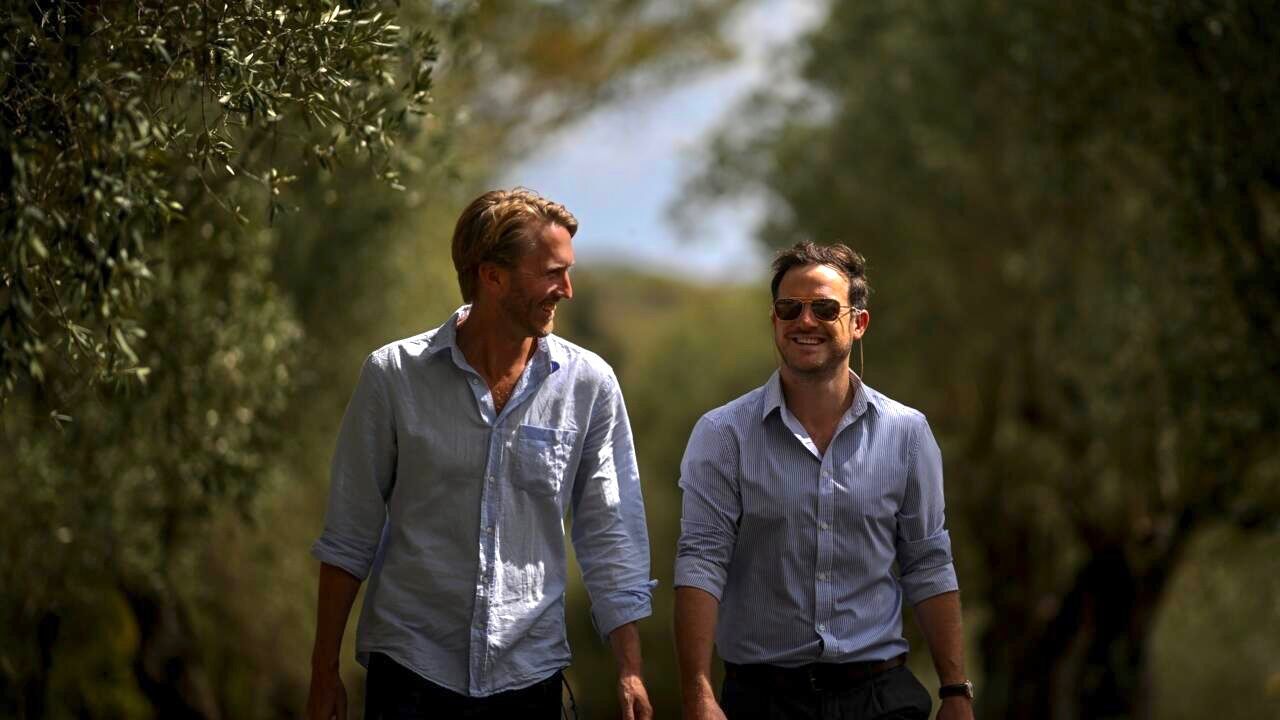
The re-election of Donald Trump as President of the United States has left many Americans uncertain about their future. And none more so than those in the LGBTQ+ community. In a country that so many had considered a home and safe refuge for life, the next few years are now filled instead with a feeling of “what happens next?”.
For many, it has brought into sharp relief the simple question of whether Europe now offers a brighter path for their long-term future. Google searches for “Move to Europe” jumped by 226% in the week after the election, and have remained high since.
But for those with careers, families and other ties in the United States, for whom a complete relocation isn’t an option, Golden Visa programs are proving to be a popular choice.
“We’ve had a huge surge in enquiries since the election result” says Nathan Hadlock, Managing Director of Pela Terra – a Golden Visa investment fund in Portugal. “I’d say about 25% of those enquiries have come from the LGBTQ+ community.”
“We’re speaking to people every day who suddenly feel like the security of a second passport and knowing they have the optionality second home in Europe, is invaluable”
What is a Golden Visa?
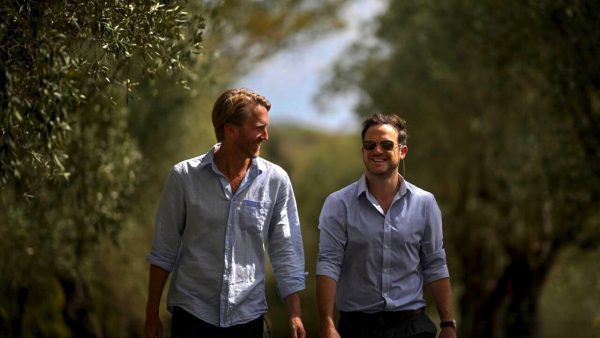
Common around the world (even the US has one!), Golden Visas typically provide a preferential pathway to a country’s passport in exchange for investment into the country.
Most people who wish to gain a second passport would need to relocate to any given country, live there for 5-10 years consecutively and eventually become eligible for citizenship.
Golden Visa programs tend to short-circuit this in exchange for investment, allowing you to qualify for citizenship in Europe while continuing to live in the US.
Portugal is the number one rated program globally, and only requires you to visit for 7 days a year for 5 years. After that, you can apply for a passport – at which point you have the right to live, work & retire in any European country for the rest of your life.
How Does The Investment Side Work?
Citizenship is something that every country sees as sovereign, and the investment required to access it reflects this.
In Portugal’s program, the minimum investment is €500,000, or $530,000. That’s the bad news.
The good news is that it is an investment. Choose wisely and you’ll not only get your money back along with your passport, you’ll also be able to earn some good returns in the meantime.
“People often mistake the word investment for cost” said Nathan Hadlock. “It’s only when we get them on the phone and explain that we’re targeting to give them a 7% return annually, as cash into their bank account, that they start to get it”.
“Of course $530,000 is a lot of money for a passport. But if you’re earning $265,000 over 7 years and then getting the money back along with your citizenship… it starts to look like a pretty good deal.
Why Portugal’s Golden Visa Is Rated Number One
Regularly rated as the world’s top citizenship by investment program, there are three key characteristics which make Portugal’s Golden Visa so popular amongst American investors:
- Minimal Residency Requirements: Spend just seven days a year in Portugal, allowing individuals to maintain ties to the U.S. while building their future in Europe
- Path to Citizenship: After five years, investors can apply for a Portuguese passport, granting them access to the European Union’s 27 member states
- Flexibility for Families: The program is inclusive, extending benefits to same-sex partners and dependents
Portugal: A Haven for LGBTQ+ Expats
Portugal has established itself as one of the most progressive countries in Europe for LGBTQ+ rights. From the legalization of same-sex marriage in 2010 to comprehensive anti-discrimination laws and legal gender recognition for transgender individuals, the country provides a supportive framework for LGBTQ+ residents and visitors alike.
Rated the 4th safest country in the world, the naturally welcoming culture includes a vibrant LGBTQ+ scene in both Lishon and Porto, the two largest cities. From inclusive neighborhoods like Príncipe Real to annual Pride events that draw global crowds, inclusiveness is celebrated everywhere. The nation’s warm hospitality and cultural richness create an ideal environment for LGBTQ+ individuals seeking a sense of belonging and security.
Golden Visas For Good
Until 2023, 95% of Golden Visa investment was funnelled into Real Estate investments. This short-sighted policy created house price inflation, leaving local teachers reportedly living in tents because they couldn’t afford rents in Lisbon.
Thankfully the real estate option was shut down last year, and a few funds have pioneered a new “Golden Visas For Good” model in their wake. “When I arrived in Portugal from the US in 2018, I couldn’t believe all this foreign capital wasn’t being directed towards the common good” said Hadlock. “It felt like a wasted opportunity, but I’m proud to say we’re at the forefront of trying to change that”.
Pela Terra is one of the funds leading the charge. Investor’s capital is used to buy olive and almond farms in the Alentego region of Portugal. The team then focuses on improving soil health on the land, allowing it to capture more carbon from the atmosphere and hold more water. Crucially, they also believe it’ll produce more nutritious food, meaning strong returns for investors.
“We target a 7-9% annual return. It isn’t beating the S&P 500 most years, but we’re making investments into an incredibly durable asset class and prioritizing, above all else, the full preservation and return of your investment in Year 7. So beating inflation isn’t bad.”
Conclusion
Portugal’s Golden Visa program is more than an investment; it’s a lifeline for LGBTQ+ Americans seeking a safer, freer future. By choosing partners like Pela Terra, investors can align their financial goals with their values, securing both their residency and a sustainable legacy.
If you’re considering your options, there’s no better time to act. Learn more about Pela Terra and take the first step toward securing your European future today.
-

 U.S. Supreme Court4 days ago
U.S. Supreme Court4 days agoSupreme Court upholds ACA rule that makes PrEP, other preventative care free
-

 U.S. Supreme Court4 days ago
U.S. Supreme Court4 days agoSupreme Court rules parents must have option to opt children out of LGBTQ-specific lessons
-
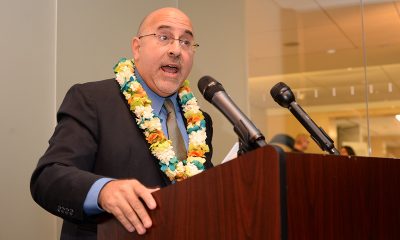
 National5 days ago
National5 days agoEvan Wolfson on the 10-year legacy of marriage equality
-
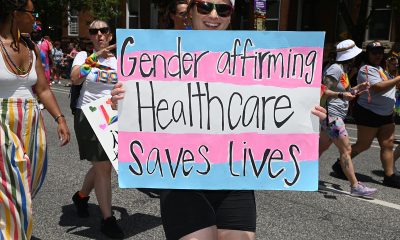
 Congress5 days ago
Congress5 days agoSenate parliamentarian orders removal of gender-affirming care ban from GOP reconciliation bill










